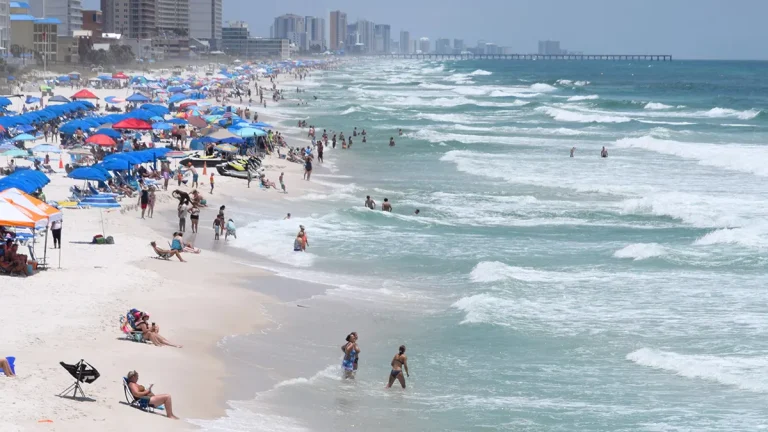4 drowned At Panama City Beach By Current

In a heart-wrenching turn of events, Panama City Beach known for its sun-kissed shores and vibrant atmosphere—witnessed a devastating loss. Within a mere 48 hours, four lives were claimed by the relentless pull of rip currents.
The Victims:
- Three Young Men from Alabama:
- These young men had embarked on a beach trip, their laughter and anticipation filling the air.
- In a cruel twist of fate, they found themselves caught in the powerful currents, unable to break free.
The Hidden Danger: Rip Currents:
- What Are Rip Currents?
- Rip currents are swift, narrow channels of water that flow from the shore out to sea.
- They can occur suddenly, even on seemingly calm days, and pose a grave risk to swimmers.
- The Tragedy Unfolds:
- The victims were pulled away from the safety of the shore, their struggles futile against the force of the currents.
- Despite rescue efforts, their lives were tragically cut short.
A Reminder:
- Vigilance: Beachgoers must remain vigilant, especially in areas prone to rip currents.
Rip currents are narrow, fast-moving channels of water that flow from the shore back out to sea. They typically form in areas where waves break near the shoreline, creating a gap through which water rushes back into deeper waters. Rip currents can occur suddenly and are often difficult to spot from the beach.
Causes and Factors:
-
- Rip currents result from a combination of wave action, tides, and underwater topography.
- Factors that contribute to their formation include:
- Wave Energy: Strong waves breaking at an angle toward the shore create water flow patterns that lead to rip currents.
- Sandbars and Channels: Underwater sandbars and depressions in the ocean floor play a role in directing water flow.
- Tidal Changes: Rip currents can intensify during tidal changes (e.g., incoming or outgoing tides).
- Beach Shape: The shape of the beach affects how water moves along the shoreline.

Identifying Rip Currents:
-
- Look for the following signs:
- Murky Water: Rip currents often carry sediment, making the water appear darker.
- Foamy Lines: Foam or debris moving seaward in a distinct line indicates a rip current.
- Choppy Water: Rip currents disrupt the surface, causing rougher water compared to surrounding areas.
- Gaps in Breaking Waves: Calmer patches between breaking waves may indicate a rip current.
- Look for the following signs:
Drowning Statistics:
-
- Children Aged 1-4: More children in this age group die from drowning than any other cause of death.
- Ages 5-14: Drowning is the second leading cause of unintentional injury death.
- Annual Drowning Deaths: In the United States, there are over 4,000 unintentional drowning deaths each year.
Drowning Trends:
-
- The number of drowning deaths varies by month and year.
- State-specific drowning death rates also differ. The annual age-adjusted rate during 2018-2021 was 1.31 deaths per 100,000 people.
Recent Increase:
-
- From 2020 to 2022, over 4,500 people drowned annually in the United States—about 500 more deaths per year compared to 2019.
- Vulnerable groups, including young children, older adults, and Black individuals, saw the greatest increases in drowning deaths.
Fatal vs. Nonfatal Drowning:
-
- Fatal Drowning: Results in death.
- Nonfatal Drowning: A person survives but may experience serious injuries, including brain damage or permanent disability.


